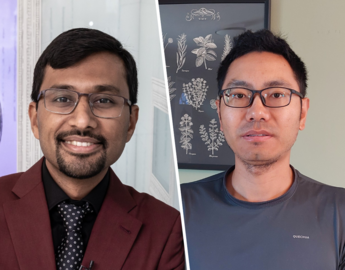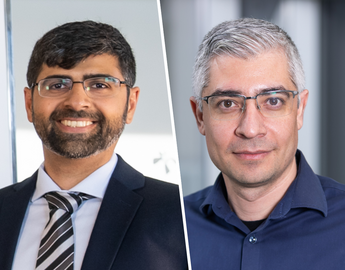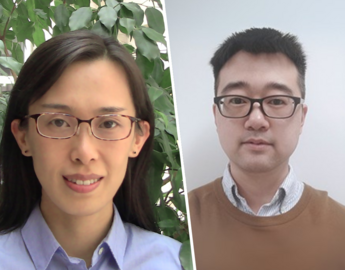What is the Hopewell M.I.N.D. Prize?
The Hopewell M.I.N.D. Prize (Maximizing Innovation in Neuroscience Discovery) was created through a generous $10M philanthropic commitment from Mr. Sanders Lee to the Hotchkiss Brain Institute (HBI). Mr. Lee, the Founder and Executive Chairman of the Hopewell® Group of Companies is a visionary leader who embraces the idea of technology and science for the betterment of society.
This prize will serve as a catalyst to launch innovative, bold, high-impact research projects in brain and mental health at the University of Calgary. The Hopewell M.I.N.D. Prize – unique in Canada – offers up to $1 million per year for the next ten years to fund research projects that are “ahead of the curve." These projects would be at a critical crossroads where an injection of funding has the potential to transform the project into significant community impact.
2025 - 2026 Competition Now Open!
2025 M.I.N.D. Prize Winners
2025 Innovation Prize Jury
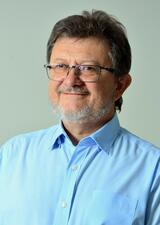
Dr Fernando Cendes
Professor of Neurology at University of Campinas – UNICAMP, and Director of The Brazilian Research Institute for Neuroscience and Neurotechnology (BRAINN)

Professor Tarja Malm
Professor in Molecular Neurobiology and the head of the Neuroinflammation research group at the A.I.Virtanen Institute, University of Eastern Finland

Dr. Harold Pincus
Dr Harold Pincus, MD, Professor
Department of Psychiatry, Columbia University
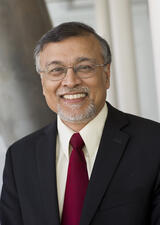
Professor Mriganka Sur
Newton Professor of Neuroscience,
Director, Simons Center for the Social Brain, MIT

Dr Julie A. Schneider
The Deborah R. And Edgar D. Jannotta Presidential Professor, Department of Pathology & Neurological Sciences, Rush University Medical Center
Director, Alzheimer's Disease Research Center and Associate Director, Rush Alzheimer’s Disease
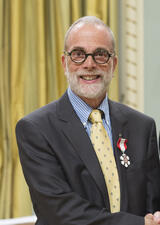
Previous M.I.N.D. Prize Winners
Explore how previous winners are advancing neuroscience and shaping the future of brain and mental health research supported by the $1-million Hopewell M.I.N.D. Prize.
Drs. Jiami Guo and Lizheng Wang received the 2025 Hopewell M.I.N.D. Prize for Targeted Primary Cilia Protein Degradation for Neuroinflammation Modulation in Central Nervous System Diseases, a project investigating how astrocytes (key immune cells in the brain) can be guided to reduce harmful neuroinflammation and support recovery in central nervous system diseases. Their work focuses on primary cilia, specialized signaling structures in astrocytes, and explores how modulating these cilia can improve outcomes after stroke and cognitive decline with aging.
The research aims to:
• uncover the mechanisms by which astrocyte cilia regulate protective versus pathological neuroinflammation
• develop strategies to control cilia-driven astrocyte behavior for therapeutic benefit in CNS diseases
• translate these findings into potential interventions that can improve brain health and recovery in humans
Dr. Adam Kirton and Dr. Alicia Hilderley received the 2024 Hopewell M.I.N.D. Prize for BCI@home, a project designed to bring brain–computer interface (BCI) technology into the homes of children living with severe physical disabilities. Building on the BCI4Kids program, their work uses non-invasive headsets that translate brain signals into digital actions, enabling children who cannot move or speak to interact with their environment.
The research aims to:
• deliver personalized BCI systems directly to families’ homes to support communication and daily function
• identify each child’s unique goals and tailor BCI tools to help them participate more fully in life
• build a scalable model of community-based BCI care in Alberta, creating a pathway for national and global expansion
Where they are now
The team has received ethics approval to evaluate Club BCI, a summer camp–style program where children use BCI technology in a supportive group setting, with eight participants expected in 2025. Insights from this program will directly inform BCI@home. In June 2025, the team hosted the world’s largest BCI meeting in Banff, bringing together international leaders and patient partners. They have also established their core transdisciplinary team (family partners, engineering, occupational therapy, clinical leads) and submitted ethics for BCI@home, with recruitment planned for Fall 2025. Multiple home-based BCI applications are now in development, guided by ongoing family engagement.
Dr. Aaron Phillips received the 2023 $1-million Hopewell M.I.N.D. Prize for a project testing a new way to protect and heal the spinal cord after injury. His research focuses on the critical period after trauma, when unstable blood flow creates a “secondary injury” that can double the severity of long-term damage. Dr. Phillips’ team is exploring whether stabilizing spinal cord blood flow early on can improve recovery and reduce disability.
The research aims to:
- test whether a closed-loop system that adjusts carbon dioxide levels can stabilize blood flow and support neurorecovery
- evaluate additional targeted drugs that may improve circulation at the injury site
- combine effective hemodynamic treatments with rehabilitation to enhance recovery outcomes
Where they are now
Dr. Phillips continues to advance Hemodynamic Neuroprotection for spinal cord injury (SCI). Over the past year, his team has examined how carbon dioxide improves blood flow in the central nervous system to minimize the long-term damage from SCI. They have also tested carbon dioxide therapy alongside currently available drugs to promote recovery of function after SCI, with promising results showing improved survivability and function. The team has developed analytical methods to assess motor recovery after SCI and will next use advanced imaging techniques to explore the specific mechanisms behind these improvements. The scientific knowledge and clinical application of this technology has the potential to extend to other conditions like stroke or traumatic brain injury. By informing how SCI is acutely treated, Dr. Phillip’s work promises to improve patient outcomes, reduce risk of complications, lessen health care costs, and improve overall quality of life.
Dr. Peter Stys received the inaugural $1-million Hopewell M.I.N.D. Prize for his work exploring the non-immune role of B cells in Multiple Sclerosis. Dr. Sty’s research proposed that beyond autoimmune inflammation, MS may involve a protein-misfolding degenerative process driven by a toxic factor secreted by B cells.
The research aims to:
- study B cells from MS patients to identify this unknown toxic factor
- test whether B cells or their secretions can cause MS-like damage
- investigate whether Epstein–Barr virus, which almost everyone with MS has been infected with, plays a role in turning B cells into these toxin-producing cells.
Where they are now
Dr. Stys has shown that cultured B cells from patients with multiple sclerosis (MS) are indeed toxic, and remain so for many generations, suggesting they may be genetically modified in the patient. However, the team has uncovered an exciting new discovery in selectively removing toxic misfolded proteins from the byproducts of MS B cells release. This confirms their original suspicion: that the toxin produced by MS B cells is not an antibody, but an Alzheimer’s-like misfolded protein. The next exciting step is to identify the precise molecular nature of this toxin, which will radically change our understanding of the relationship between the immune system and the brain in MS.
$10 million to create Hopewell M.I.N.D. Prize
Calgarians are known for making big, bold things happen. Sanders Lee is one of them. A record-breaking new prize in brain and mental health research will bring new ideas to the fore – sparking innovation through cutting edge research at the Hotchkiss Brain Institute (HBI).
“I've always been a supporter of the Hotchkiss Brain Institute, and Dr. David Park approached me with what he called a bold idea,” says Lee. “I think at the end of the day, I’m a risk taker, and I loved the idea.”




